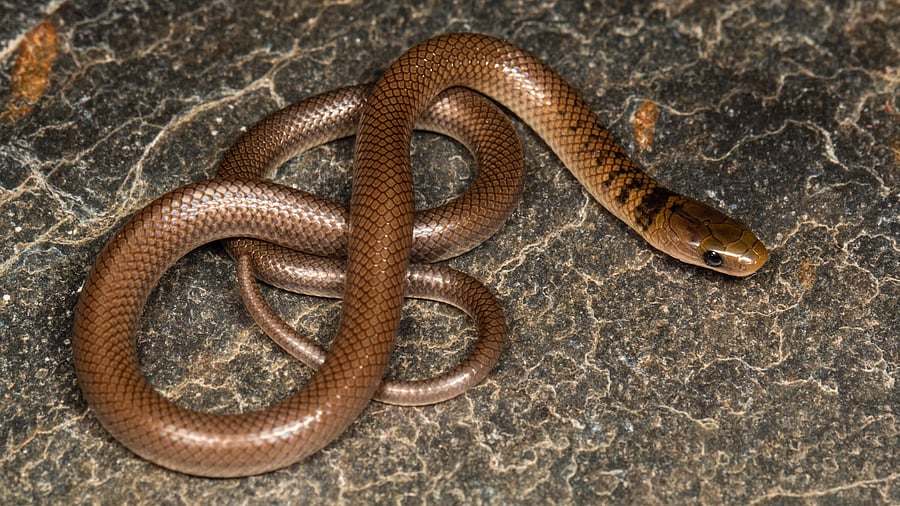
Anguiculus dicaprioi or DiCaprio’s Himalayan snake.
Credit: Zeeshan A. Mirza
A new genus and snake species discovered in the Himalayas has been named after Leonardo DiCaprio, an American actor, film producer and environmentalist.
Leonardo DiCaprio has been actively involved in creating awareness about global climate change, increased biodiversity loss, and human health issues due to pollution - and the name has been given to honour his work.
The discovery was made by a team of researchers from Germany, India, and the United Kingdom.
The research paper said the new species with dozens of teeth is “small sized”, growing to around 22 inches, having a “broad collar with small dark brown spots”, a "robust skull", and a “steeply domed snout”. They live at heights of around 6,000 feet above sea level. The new species has been named as Anguiculus dicaprioi.
The research paper was authored by Zeeshan A. Mirza of the Max Planck Institute for Biology, Tübingen (Germany), Virender K. Bhardwaj and H. T. Lalremsanga of the Mizoram University (India), Saunak Pal of the Newcastle University (UK), Gernot Vogel of the Society for Southeast Asian Herpetology (Germany), Patrick D. Campbell of the Natural History Museum (UK) and Harhisl Patel of the Thackeray Wildlife Foundation (India), according to a press statement issued in Mumbai.
The snake was first found by Virender Bhardwaj while exploring his backyard in June 2020. He was at home in the western Himalayas during the pandemic. He photographed some species he found and uploaded them on Instagram, which popped up on Zeeshan Mirza’s Instagram search feed. The photograph led to an investigation that took three years to identify this snake.
The snake resembled Liopeltis rappi, a species known to be found in the eastern Himalayas. However, the one from Himachal Pradesh differed from the true Liopeltis rappi found in Sikkim in several aspects of the scales on the head and general colouration. This was confirmed after examining specimens from natural history museums across Europe, the USA and India.
DNA sequences generated of this snake did not match any known genus, and the team grew to include DNA and morphological data for other related species from across Asia. The complication of molecular and morphological data suggested that the snake from Himachal Pradesh is related to Liopeltis rappi but differs in several aspects to be called a new species, and these two species belong to a new genus that is endemic to the Himalayas.
The paper was submitted early this year and was published in the recent issue of the international journal Scientific Reports. “The work not only resolved the status of the Himalayan species but also resolved a taxonomic confusion regarding the genera Liopeltis and Gongylosoma that lasted 180 years. The work provides a newly revised classification of these two genera that are distributed across Asia,” the statement said.
The members of the genus Anguiculus are small and are currently known by two species. These snakes are found at elevations above 1,500 meters across the Himalayas.
The newly described species, 'Anguiculus dicaprioi' is found from central Nepal to Chamba district in Himachal Pradesh, whereas Anguiculus rappii is found in Sikkim, Bhutan and Arunachal Pradesh. These snakes are mostly active from late May to August and are not seen at other times of the year. Nothing is known about the biology of the two species.
Anguiculus rappii is rare and has not been recorded in the last couple of decades.
"The description of a new snake genus and species from Himachal Pradesh highlights the poor documentation of herpetofauna in the Western Himalayas. The states of Himachal Pradesh and Jammu and Kashmir remain among the least explored for their herpetofaunal biota. Our team is conducting dedicated surveys across Himachal Pradesh and Uttarakhand, and preliminary data suggests that the region’s biodiversity has been grossly underestimated," the researchers said in a statement.